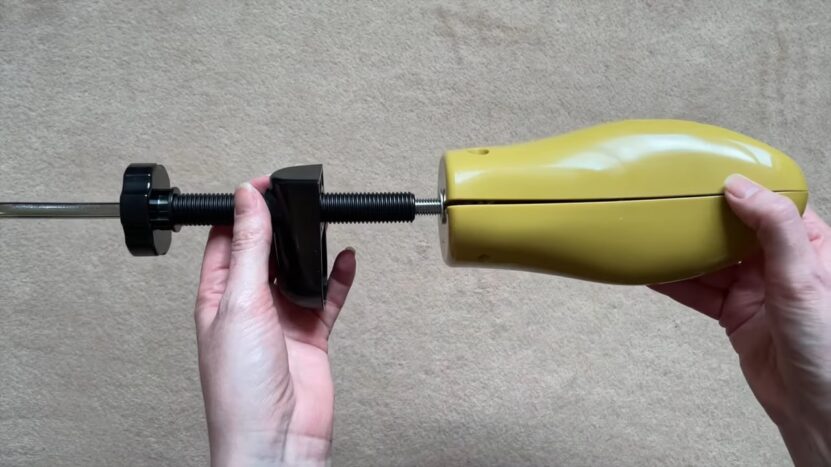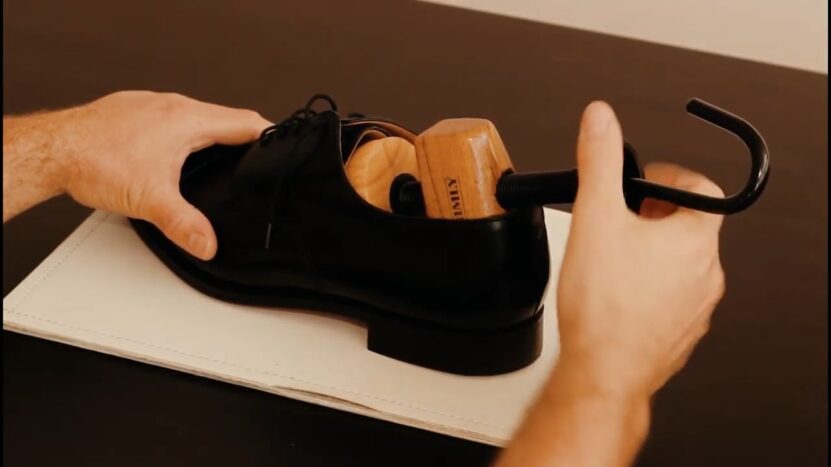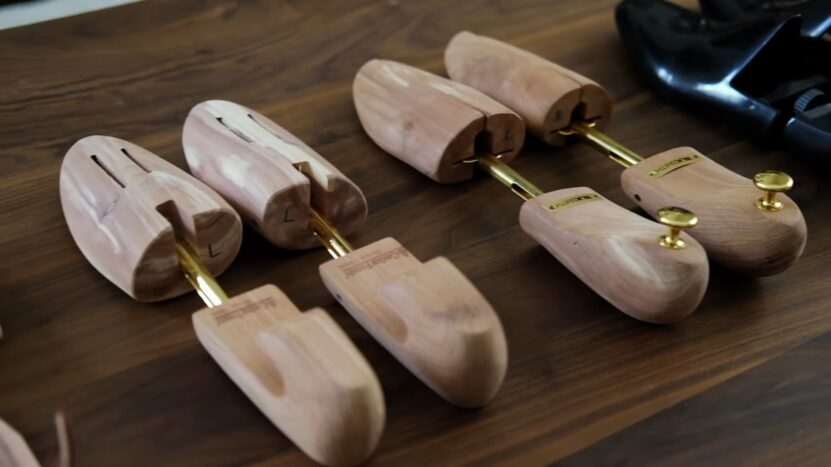You’ve finally found the perfect pair of shoes – they’re stylish, and well-made, and they match your wardrobe flawlessly. But there’s just one problem: they’re a tad too tight. You’ve tried breaking them in by wearing them around the house, but that only left you with blisters and sore feet. So, what’s the solution? Shoe stretchers. But do they really work? In this comprehensive guide, we’ll dive deep into the world of shoe stretchers, exploring their effectiveness, benefits, and how to use them properly.
What Are Shoe Stretchers?
A shoe stretcher is a device made of wood, plastic, or metal designed to stretch tight-fitting shoes for a more comfortable fit. They come in various shapes and sizes to accommodate different types of shoes, such as high heels, flats, boots, and sneakers. Shoe stretchers work by applying pressure on the shoe’s material, gradually expanding it to create more room for your feet.
How Do They Work?
Shoe stretchers work by expanding the material of the shoe, typically through the use of pressure or heat. The most common type of shoe stretcher uses pressure to stretch the shoe. This is done by inserting the stretcher into the shoe and then turning a knob or lever that expands the stretcher to the desired width.
Some shoe stretchers also use heat to help stretch the shoe. This is typically done with a stretching spray or by heating the shoe with a hairdryer or other heat source. The heat helps to soften the material of the shoe, making it more pliable and easier to stretch.
If you want to read more about the differences between shoe cream and polish, read our previous article.
Types You Can Get

There are several types of shoe stretchers available on the market, each with its own unique features and benefits. Here are some of the most common types of shoe stretchers:
- Two-way Shoe Stretchers: These stretchers are designed to stretch both the length and width of the shoe, making them ideal for shoes that are too tight all around.
- Toe Stretchers: These stretchers are designed to stretch the toe box of the shoe, helping to relieve pressure on the toes and prevent blisters.
- Instep Stretchers: These stretchers are designed to stretch the area of the shoe that goes over the top of the foot, helping to relieve pressure on the instep.
- High-Heel Stretchers: These stretchers are designed specifically for high-heeled shoes and are used to stretch the width of the shoe to provide a more comfortable fit.
- Boot Stretchers: These stretchers are designed specifically for boots and are used to stretch the calf area of the boot to provide a better fit.
How to Use Them
Now that we know a little bit about how shoe stretchers work and the different types available, let’s take a look at how to use them effectively. Here are some tips for using shoe stretchers:
- Choose the right stretcher for your shoe. Make sure to select a stretcher that is the right size and type for your shoe.
- Insert the stretcher into the shoe. Follow the instructions provided with the stretcher to insert it into the shoe.
- Turn the knob or lever to expand the stretcher. Slowly turn the knob or lever to expand the stretcher to the desired width.
- Let the stretcher sit in the shoe for several hours or overnight. This will give the stretcher time to work and stretch the shoe.
- Remove the stretcher from the shoe. Follow the instructions provided with the stretcher to remove it from the shoe.
- Try on the shoe to see if it fits better. If the shoe is still too tight, repeat the process with the stretcher.
Use a stretching spray or heat source for extra stretching power. If you are having trouble stretching the shoe with just the stretcher, you can try using a stretching spray or heat source to help soften the material of the shoe and make it easier to stretch. Just be careful not to overheat the shoe, as this can damage the material.
Here, you can read out the moc toe boot comparison.
Tips for Using Shoe Stretchers
Here are some additional tips for using shoe stretchers effectively:
- Be patient: Stretching shoes can take time, so be patient and give the stretcher plenty of time to work. It may take several hours or even overnight to achieve the desired results.
- Don’t overstretch: Be careful not to overstretch your shoes, as this can damage the material and cause the shoe to become too loose.
- Use stretching spray sparingly: If you decide to use a stretching spray, use it sparingly and follow the instructions carefully. Too much spray can damage the material of the shoe.
- Consider taking your shoes to a professional: If you are unsure about how to stretch your shoes or don’t feel comfortable doing it yourself, consider taking them to a professional shoemaker or cobbler who can stretch them for you.
Do Shoe Stretchers Work for All Shoes?

While shoe stretchers can be effective for many types of shoes, they may not work for all shoes. Shoes made from synthetic materials, for example, may not stretch as well as those made from leather or suede. Additionally, shoes with very rigid or thick materials may be more difficult to stretch.
It’s also worth noting that shoe stretchers may not be effective for shoes that are simply too small. If your shoes are too small, stretching them may not provide enough extra room to make them comfortable.
Final Thoughts
So, do shoe stretchers work? The answer is yes, they can be effective for stretching shoes and making them more comfortable. However, it’s important to choose the right type of stretcher for your shoe, use it correctly, and be patient. If you’re unsure about how to stretch your shoes, consider taking them to a professional for help.
In conclusion, shoe stretchers can be a useful tool for anyone looking to make their shoes more comfortable. Whether you have a new pair of shoes that are too tight or an old pair that no longer fits, a shoe stretcher can help to relieve pressure points and provide a more comfortable fit. So why suffer in uncomfortable shoes? Give shoe stretchers a try and see if they work for you!

